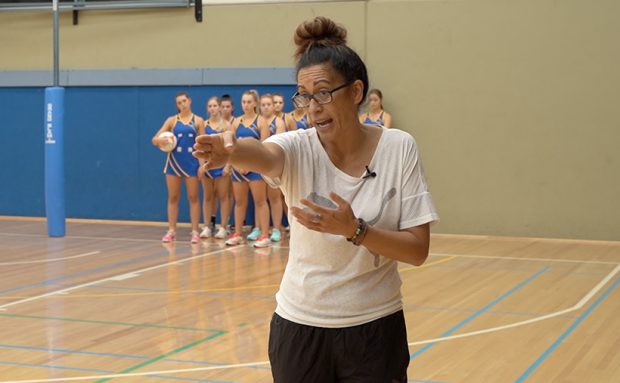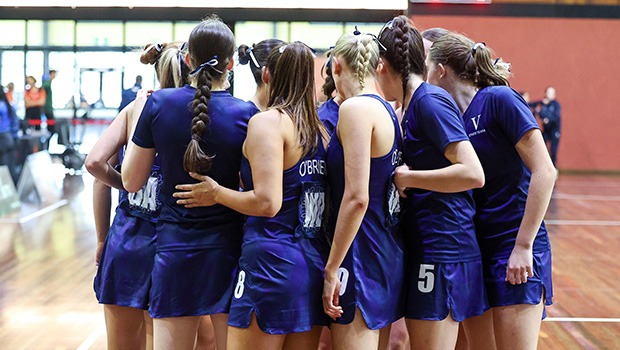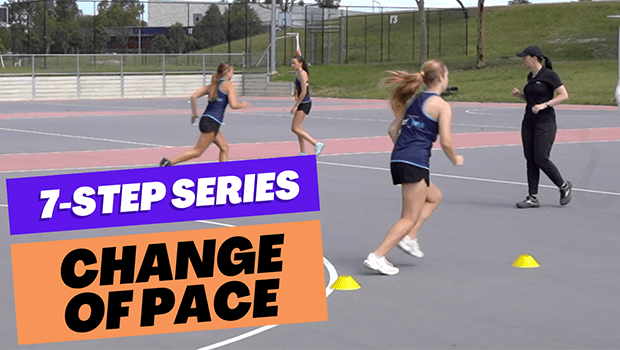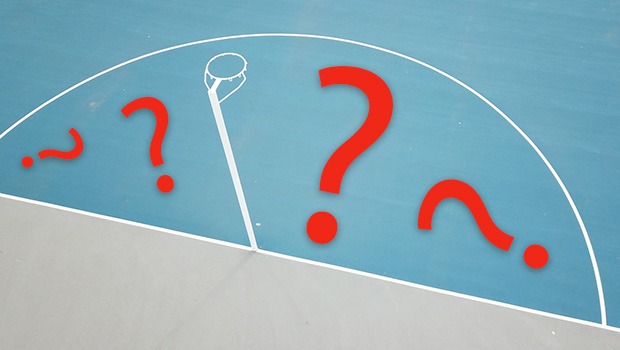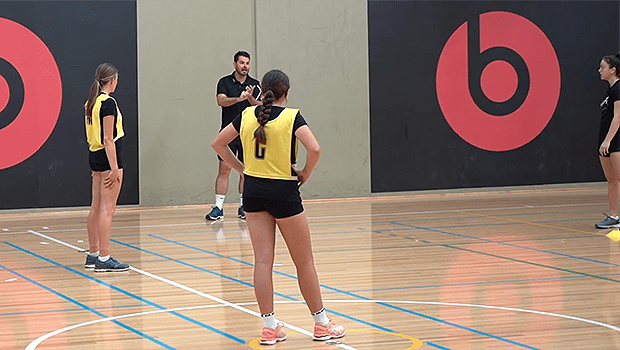
– by Sarah Hogan
If there’s one thing we know as netball coaches, it’s that there’s never enough time to get through everything we’d like to in a training session.
Whether you’ve got 45 minutes or three hours for your session, we’re always searching for those few extra minutes to give our players a little bit longer on a drill or to make sure we’ve covered everything we set out to.
With this in mind, are there some small changes we can make from our end as coaches that could deliver a big return on the training court and allow us to make the best use of our team’s training time?
Saving a minute here and two minutes there might not sound like much, but over a season it quickly adds up and could mean your players effectively receive an extra session worth of training.
Here are some simple tips to ensure you’re maximising every minute of your time with your athletes.
Arrive with a plan
The amount of time you put into planning a session will vary from coach to coach, and everyone is different in how they operate.
A rough plan is better than no plan, and having something in place can assist in preventing a problem before it arises.
NEED HELP AT TRAINING? REGISTER TO ACCESS MORE THAN 550 DRILL VIDEOS!
I’m sure we’ve all reflected on sessions and thought, “I should have done that this way?”, and yes, reflection is an important tool for growth, but could some of these ‘should haves’ been avoided with appropriate planning?
Start on time
Many of us are probably guilty of having a chinwag with a few of the parents, or maybe the players themselves. But can you get them moving at the same time? (The players, that is).
Sometimes we may have rushed from work or another commitment and are running a couple of minutes late – it happens. But if it starts to become a habit and we’re always starting five minutes after our scheduled time, over the course of a season that’s a lot of vital time that players are missing out on practising their skills.
This goes for setting standards with your players as well – players should always be ready to go five minutes before training starts so you can start on time and get the absolute maximum out of each session.
Get creative with the warm-up – Activation is important, and for older age groups a set warm-up routine may be the preferred option, but could a ball be added into some of the movements completed during warm-up to get your players switched on?
Is this training session the only time (apart from game day) where players get to touch a netball? If so, adding in a ball during warm up, even if it is while they are doing some dynamic stretches, jumping, or even some quick relays, can be an effective way to ensure they can continue developing these basic motor skills, and provide coaches with another chance to assess where each player is at, both physically and mentally at the start of training.
A small-sided game (a game where your players are split into small teams) can also be an effective way to engage your playing group.
Stay on track and build in a buffer
This is a hard one, because sometimes we get so excited about what we’re coaching that one thing leads to another and the next thing you know you’ve run out of time.
Timings at training should be a part of your session plan and used as a guide, and if your players are learning and developing a particular skill, it may mean you stay on the one activity for a bit longer.
Alternatively, if an activity is really not working and players aren’t grasping the skill, it’s important to have an alternative plan up your sleeve that you can switch to, so that you don’t lose player buy-in for the session.
Keep the ball rolling! Or throwing! Building in an extra few minutes between activities can help you avoid running overtime, or if it’s an efficient session it might potentially result in some extra time at the end of the session for further court application (something that we often run out of time for).
Create quick transitions
Setting up expectations with your players early in the season can be important, but it’s never too late to do this either. This means players having their drink bottles out of their bags and beside the court, players going to the toilet before training, and coaches having equipment out of their kit bag and ready to be used.
Having minimal downtime between activities is important to maintain player engagement and to make better use of time.
To enable you to move quickly between activities, plan ahead and be aware of what equipment you need for the following activity. Could some cones be left out for the next drill or could players bring their cones in for you from the previous drill?
Could you set up the equipment/spacing while the players are getting a drink, or get players who may have finished the previous activity early to set up the next activity? Could you work with another coach for the ‘skill’ component of the training session, and while one coach is explaining the activity, the other coach is setting it up for other groups to move into?
Quick transitions take practice, so set yourself small targets and keep building as the season progresses.
Explain and demonstrate simultaneously
At times we can be guilty of explaining an activity verbally to the team, and then setting up a group to demonstrate afterwards. Often very similar information/instruction is given during both of these steps, so why not combine them straight away?
Set up your demo group and explain the drill to the rest of the team while stepping those players through it. This also allows you to refresh in your head what the key coaching points are for the drills.
Keep the chat short
We don’t need to give players examples of every possible scenario that could happen during a drill or setup. Or perhaps there is a player in your team that likes to ask a lot of questions.
While it’s important that players have enough information to achieve success in the drill, you need to find the balance between talking time and time spent actually completing the drill and learning through trial and repetition.
It’s also worth remembering that players retain on a couple of piece of information at a time, so don’t overload them. Additional information and feedback – or details you’ve forgotten – can be reinforced while they are completing the task.
Don’t sweat it
It’s netball, and things don’t always go the way you planned!
Sometimes a drill just doesn’t work out, or the vibe isn’t there and you need to change it.
That’s ok. Change it if you need to, and the good news is you’ll have part of a session ready to go for the following week.
As you develop as a coach you’ll find ways to get a bit more out of each session, and that’s what coaching is all about.
Sarah Hogan is a highly experienced coach, having led the Victorian 15/U Schoolgirls team, the Victorian 17U Boys team and Victorian Netball League club North East Blaze, and is a former state and Australian mixed representative as a player.
